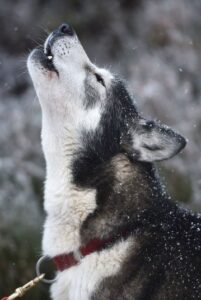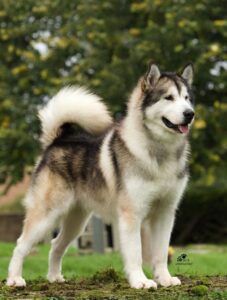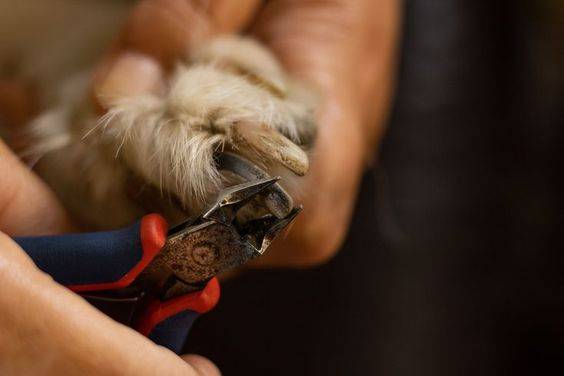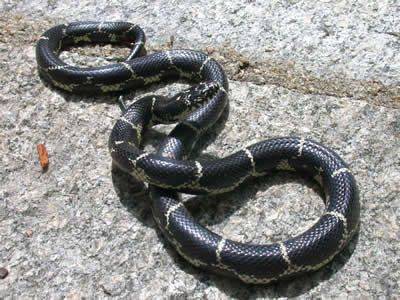Welcome to Your Pet Diary, where we embark on a journey to explore the world of scary dog breeds. Dogs are often known as man’s best friend, but some breeds carry a reputation for being intimidating or even frightening. In this comprehensive guide, we’ll delve into the characteristics, history, and myths surrounding some of the most notorious scary dog breeds. From their appearance to their behavior, we’ll uncover the truth behind these misunderstood canines and provide valuable insights for potential owners and dog enthusiasts alike.
Understanding Scary Dog Breeds
Understanding scary dog breeds involves acknowledging that certain breeds may have intimidating appearances or behaviors, often due to their size, strength, or historical roles. However, it’s crucial to recognize that a dog’s behavior is mainly shaped by factors like training, socialization, and individual temperament rather than breed alone. Responsible ownership, proper training, and positive interactions can help dispel any misconceptions about these breeds and promote understanding and empathy towards them.
The Top Scary Dog Breeds
The term “scary” can be subjective when it comes to scary dog breeds, but some breeds are often perceived as intimidating due to their size, strength, or appearance. Some examples include:
Pit Bull Terriers
Pit Bull Terriers often get a bad rap in the media, portrayed as scary or aggressive dogs. However, it’s important to understand that this reputation is largely undeserved. Like any other breed, a Pit Bull’s behavior is largely influenced by its upbringing, socialization, and training.

Pit Bulls were historically bred for bull-baiting and later dogfighting, so they do have strong jaws and a muscular build. But with proper care and training, they can be loving, loyal family pets. In fact, many Pit Bulls are known for their affectionate and friendly nature towards humans.
It’s crucial to remember that responsible ownership plays a significant role in shaping a dog’s behavior. Providing proper training, socialization, and a loving environment are key factors in ensuring that any dog, including Pit Bulls, behaves well and interacts positively with others.
While it’s true that some individuals may exhibit aggressive tendencies, this can often be attributed to factors such as neglect, abuse, or irresponsible breeding rather than inherent traits of the breed itself. Painting all Pit Bulls as scary or dangerous overlooks the many well-behaved and gentle members of the breed.
Ultimately, judgments about Pit Bulls should be based on individual temperament and behavior rather than stereotypes. With responsible ownership and proper care, Pit Bulls can be wonderful companions and beloved family members.
Doberman Pinscher
The Doberman Pinscher is a distinctive and often misunderstood breed. With their sleek, muscular build and alert demeanor, they can appear intimidating to some. However, like any breed, their behavior is largely shaped by their upbringing and training.

Originally bred in Germany by a tax collector named Karl Friedrich Louis Dobermann in the late 19th century, the Doberman was created to be a versatile working dog, capable of guarding, protection, and companionship. They were developed to be loyal and obedient companions, traits that are still evident in the breed today.
Dobermans are known for their intelligence and loyalty to their families. They form strong bonds with their owners and are often described as affectionate and devoted. They are also highly trainable, excelling in obedience and agility competitions.
Despite their reputation as guard dogs, well-socialized Dobermans are typically friendly and outgoing with people. They are known for their protective instincts and will alert their owners to any potential threats, but they are not inherently aggressive.
Like any breed, early socialization and consistent training are essential for Dobermans to thrive as well-adjusted companions. With proper care and attention, Dobermans can make loving and loyal family pets, bringing joy and companionship to their owners for many years.
German Shepherd
The German Shepherd stands out as one of the most globally recognized and beloved dog breeds, celebrated for its exceptional intelligence, unwavering loyalty, and remarkable versatility. Originally bred in Germany in the late 19th century, they were developed for herding and guarding sheep, but their exceptional qualities quickly made them valuable in other roles, such performing duties in law enforcement and armed forces, conducting search and rescue operations, and fulfilling tasks as service dogs.

German Shepherds are widely recognized for their exceptional intelligence and ease of training.. They are quick learners and excel in obedience training, making them ideal candidates for various working roles. Their keen senses and strong work ethic make them adept at tasks such as scent detection, tracking, and protection work.
Apart from their remarkable working capabilities, German Shepherds are cherished as beloved family companions. They exhibit unwavering loyalty and devotion to their families, forging deep and enduring bonds with their owners. Despite their size and strength, they are typically gentle and affectionate with children and other household pets when properly socialized.
With their high energy levels and need for mental stimulation, German Shepherds thrive in environments where they have plenty of opportunities for exercise and activities. Regular physical exercise and mental stimulation are essential to prevent boredom and potential behavioral issues.
While German Shepherds have a reputation for being protective, they are not inherently aggressive. Proper socialization from a young age is crucial to ensure they develop into well-adjusted and well-behaved companions.
Overall, German Shepherds are versatile, intelligent, and loyal dogs that excel in a variety of roles. With proper training, socialization, and care, they make wonderful family pets and working partners.
Siberian Husky
The Siberian Husky is a striking and energetic breed known for its distinctive appearance and friendly demeanor. Originating from northeastern Siberia, these dogs were bred by the Chukchi people to pull sleds over long distances in harsh Arctic conditions. Their endurance, strength, and ability to work as a team made them invaluable for transportation and hunting in the region’s unforgiving terrain.

Siberian Huskies are easily recognizable by their striking appearance, with their thick double coat, erect triangular ears, and piercing blue or multicolored eyes. Their coat comes in a variety of colors and markings, adding to their unique beauty.
In addition to their physical characteristics, Siberian Huskies are known for their friendly and outgoing personality. They are social animals that thrive on companionship and enjoy being around people and other dogs. Their affectionate nature makes them popular family pets, particularly in households with active lifestyles.
Due to their sled-pulling heritage, Siberian Huskies have a high energy level and require plenty of exercise and mental stimulation to stay happy and healthy. Activities such as hiking, running, and obedience training are ideal for keeping them physically and mentally engaged.
While Siberian Huskies are generally friendly and sociable, they do have a strong independent streak and may exhibit stubborn behavior at times. Consistent training and positive reinforcement techniques are important for managing their independent nature and ensuring they develop into well-behaved companions.
It’s worth noting that Siberian Huskies have a strong prey drive and may not be suitable for households with small pets, such as cats or rabbits. Early socialization and proper training can help minimize this tendency, but it’s important for owners to be aware of their natural instincts.
Overall, Siberian Huskies are intelligent, energetic, and affectionate dogs that thrive in active households. With proper care, training, and attention to their exercise needs, they can make loyal and loving companions for individuals and families alike.
Alaskan Malamute
The Alaskan Malamute is a powerful and majestic breed known for its strength, endurance, and independent spirit. Originating from the Arctic regions of Alaska, these dogs were originally bred by the native Inuit people for pulling heavy sleds over long distances in harsh winter conditions. Their impressive strength and stamina made them indispensable for transportation and hauling heavy loads.

Alaskan Malamutes are easily recognizable by their large size, sturdy build, and dense double coat, which provides insulation against the cold. They typically have a wolf-like appearance, with erect ears, a broad head, and a plumed tail that curls over their back.
In addition to their physical prowess, Alaskan Malamutes are known for their friendly and outgoing personality. They are affectionate and loyal companions that form strong bonds with their families. Despite their imposing size, they are generally gentle and good-natured, making them suitable for households with children and other pets when properly socialized.
However, it’s important to note that Alaskan Malamutes have a strong independent streak and can be quite stubborn at times. They require firm and consistent training from an early age to ensure they develop into well-behaved and obedient companions. Positive reinforcement methods, such as treats and praise, work well with Malamutes, as they respond best to gentle and patient training techniques.
Due to their heritage as sled dogs, Alaskan Malamutes have a high energy level and require plenty of exercise and mental stimulation to stay happy and healthy. Activities such as hiking, backpacking, and pulling activities like skiing or carting are ideal for fulfilling their need for physical and mental stimulation.
It’s also worth noting that Alaskan Malamutes have a strong prey drive and may not be suitable for households with small pets, such as cats or rabbits. Early socialization and proper training can help minimize this tendency, but owners should be mindful of their natural instincts.
Overall, the Alaskan Malamute is a loyal, affectionate, and independent breed that thrives in active households. With proper care, training, and attention to their exercise needs, they can make loving and devoted companions for individuals and families alike.
Factors Influencing Scary Behavior
This chapter delves into the various factors that can influence a dog’s behavior and contribute to its perceived scariness. From genetics and breeding to environmental factors and upbringing, we explore how these elements shape a dog’s temperament and behavior.
Responsible Ownership and Management
In this crucial chapter, we emphasize the importance of responsible ownership when it comes to scary dog breeds. We discuss key considerations such as proper socialization, training techniques, and legal responsibilities. By promoting responsible ownership practices, we aim to empower owners to build strong, positive relationships with their pets.
Overcoming Fear and Building Understanding
Here, we address the issue of fear and stigma surrounding scary dog breeds. Through education, advocacy, and promoting positive interactions between dogs and humans, we aim to break down barriers and foster understanding and acceptance.
Inspirational Stories and Testimonials
In this heartwarming chapter, we share inspirational stories and testimonials from owners of scary dog breeds. These stories highlight the incredible bonds that can form between humans and their canine companions, regardless of breed or appearance. From tales of rescue and rehabilitation to stories of love and loyalty, these accounts serve as a reminder of the transformative power of dogs in our lives.
As we conclude our journey through the world of scary dog breeds, we’re reminded that perception often differs from reality. While certain breeds may carry a reputation for being intimidating, with the right care, training, and understanding, they can become cherished members of our families. At Your Pet Diary, we’re committed to promoting a more inclusive and compassionate view of all dog breeds, challenging stereotypes, and advocating for responsible ownership practices. Join us in celebrating the diversity and beauty of our canine companions, and together, let’s create a world where every dog is given the chance to thrive.







